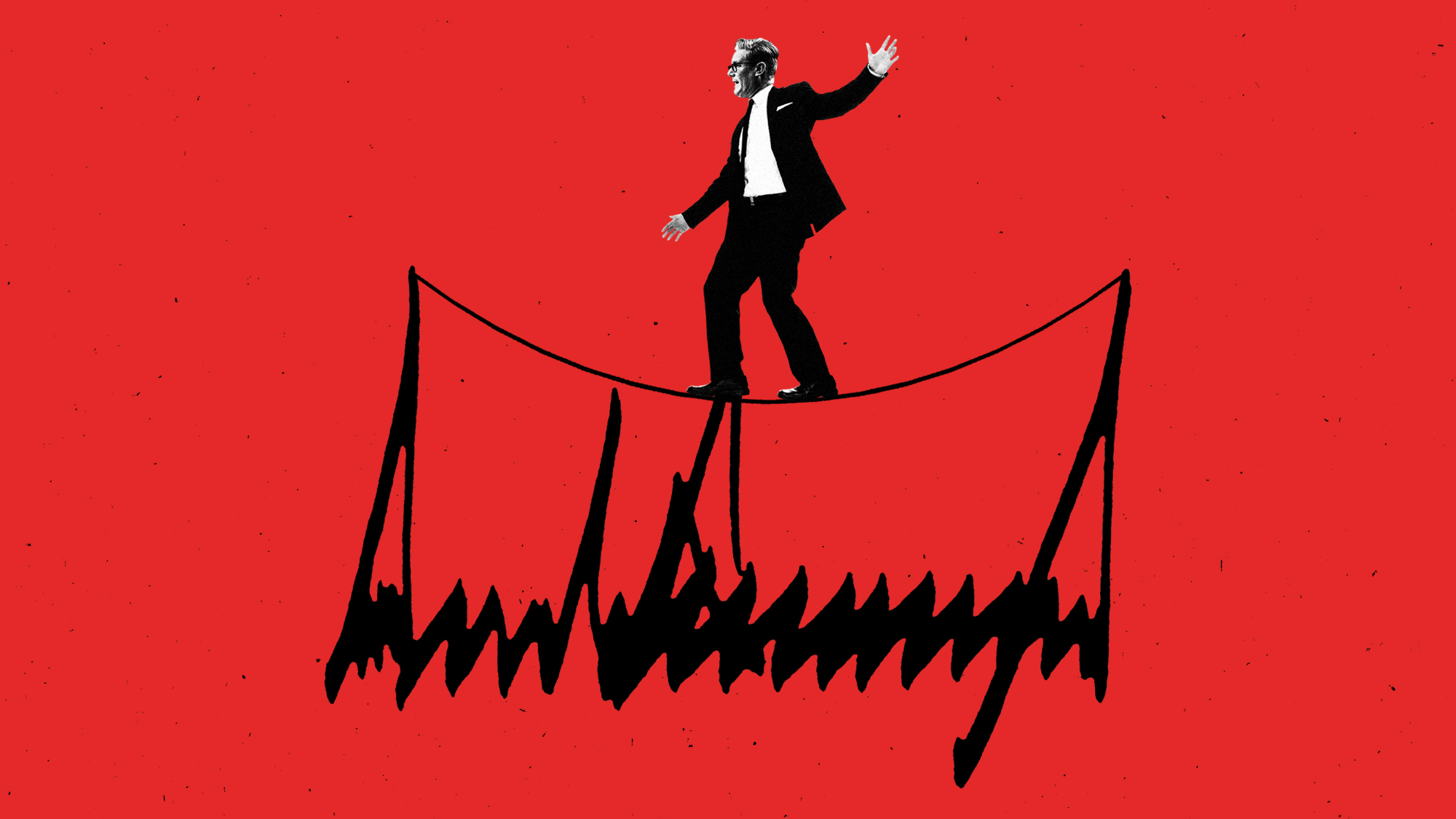3 ways to fix America's child poverty problem
One in five American children suffers through extreme financial hardship. It doesn't have to be that way

Americans hear a lot about decline. Declines in manufacturing, fading productivity, plummeting home values, spiralling deficits, and sadly, dwindling faith in the American dream.
Let me tell you where I see the worst decline — but also our nation's best hope.
One in five kids in America lives in poverty. That's 20 percent of America's future left behind. Left to drop out of high school, suffer through shorter lives, commit crimes, have a child in their teens — and then perpetuate this cycle with their own children.
The Week
Escape your echo chamber. Get the facts behind the news, plus analysis from multiple perspectives.

Sign up for The Week's Free Newsletters
From our morning news briefing to a weekly Good News Newsletter, get the best of The Week delivered directly to your inbox.
From our morning news briefing to a weekly Good News Newsletter, get the best of The Week delivered directly to your inbox.
With better education, kids live longer, earn more, wait longer to have a child, and are less likely to commit a crime.
It doesn't have to be like this. Imagine an America with 20 percent fewer high school dropouts, 20 percent fewer teen pregnancies, and a 20 percent reduction in chronic health problems like diabetes and hypertension. Picture an America with a workforce that is 20 percent more productive and packed with 20 percent more qualified job applicants. Dream of an America with 20 percent more middle-class citizens. We would be a country poised to soar.
So how do we get there?
The fastest route out of poverty lies with education. With better education, kids live longer, earn more, wait longer to have a child, and are less likely to commit a crime. More importantly, these benefits pass on to their children, snapping the cruel cycle of poverty.
A free daily email with the biggest news stories of the day – and the best features from TheWeek.com
Poverty, especially during formative early years, can be an enormous hurdle for a child's development. At U.S. schools where less than 10 percent of the student body is impoverished, reading scores rank first in the world. Yet these same scores for U.S. schools where 75 percent or more of the student body is impoverished rank 45th.
In a country with a failing K-12 school system, is it really possible to improve education for impoverished children? Yes, and here are three ways: Providing a boost for kids, lending a hand to parents, and pulling together crumbling neighborhoods.
First, we must start young, much younger than you might think. Most poor children are already behind on their first day of school. At age 4, poor children are 18 months behind developmentally, and without access to early education, kids are 25 percent more likely to drop out of high school.
Communities must target vigorous pre-K education and daycare programs for the one in five kids whose parents simply can't afford them. Soft skills such as sharing, negotiation, reason, and concentration are instilled between finger-painting and building with blocks. The critical ingredient of high expectations is introduced. These are not luxury goods. They are essential in making communities more prosperous. When states think about job training, they should begin with pre-K education.
Second, a renewed focus on parents can be the lever to pry kids from a life of poverty. For example, Nashville's Martha O'Bryan Center provides the education and resources needed for parents to raise healthy families. Parents learn positive parenting skills, tools for making their children better learners, and smart exercise and nutrition strategies to keep kids healthy. These lessons, as simple as immunization and reading to kids at night, can also delve into more substantive issues like child maturation and brain development.
Parents learn that their role is not just to put food on the table, but to act as their child's first teacher, role model, and advocate.
In addition, an educated parent is more likely to elevate a child from poverty. A parent who earns a GED provides for his or her family better, giving kids that extra boost that can make all the difference. Learning soft skills and simple trades, such as basic culinary training, can help a parent get that first job, propelling the family to a brighter future.
Third, communities play a role. Last year, Nashville began an innovative strategy providing "cradle-to-career" services to 6,000 children in one of the city's most challenging neighborhoods. The Nashville Promise Neighborhood, modeled after the successful Harlem Children's Zone, is a public-private partnership uniting government agencies, nonprofits, schools, churches, and neighbors to provide continuous, coordinated health and education support.
Instead of uncoordinated institutions attacking different problems in piecemeal fashion, the most pressing needs are attacked with proven solutions. A dependable support network is built for all residents, including early education, expanded access to learning technologies, and family support including day care. Make no mistake, this is an ambitious program and requires total buy-in, but by pulling together, entire communities can pull themselves up.
To get America back on track, we must help those who have fallen behind. Only with our nation's full strength and commitment can we tackle the trends that drag us down.
How do you think America can fix its child poverty problem? Tell us on Twitter using the hashtag #ChildPoverty.
-
 Political cartoons for January 19
Political cartoons for January 19Cartoons Monday's political cartoons include Greenland tariffs, fighting the Fed, and more
-
 Spain’s deadly high-speed train crash
Spain’s deadly high-speed train crashThe Explainer The country experienced its worst rail accident since 2013, with the death toll of 39 ‘not yet final’
-
 Can Starmer continue to walk the Trump tightrope?
Can Starmer continue to walk the Trump tightrope?Today's Big Question PM condemns US tariff threat but is less confrontational than some European allies